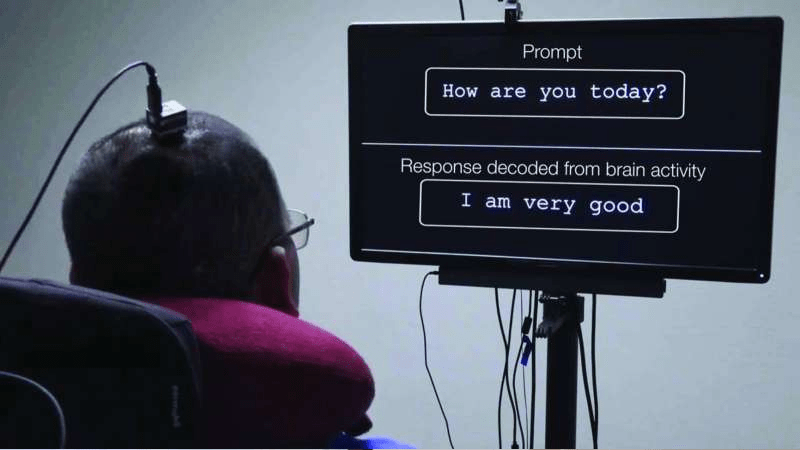A paralyzed man who is unable to speak or type letters has succeeded in expressing more than a thousand words thanks to a neuro-compensation device that translates his brain waves into actual phrases, according to US researchers.
The patient’s favorite line was, “Nothing is impossible,” said Sean Metzger of the University of California, San Francisco, who is the first author of the study, whose results were published in the journal Nature Communications, reports a local Arabic daily quoting AFP.
The team of this American university proved last year that an interface linking the brain and the computer can express in the spoken language fifty common words that the man was trying to pronounce.
As for the new study, it has proven that the interface is able to decipher the 26 letters of the global verbal alphabet that men use to silently pronounce words.
Metzger explained to AFP this mechanism, explaining that “to say the word (cat), he used to pronounce (Charlie – Alpha – Tango)” (which are the words used to denote the three letters that makes up this word).
The interface then uses a system that models language in real time to identify words or errors detected in the sequence of spoken characters.
Thus, the researchers were able to decode more than 1,150 words, which represents “more than 85 percent of the usual sentence content in the English language.”
A simulation showed that this vocabulary set could expand to more than 9,000 words, “the number of words most people use over the course of a year,” Metzger says.
The interface was able to decode about 29 characters per minute, with an error rate of 6 percent, or nearly seven words per minute.
Metzger believes that this speed could be even higher in the future, combining the interface’s abilities to understand 50 common words with an understanding of the alphabet of less frequently used words.
The participant in the trial was named “BRAVO1”, based on the name of the interface (Brain-Computer Interface Restoration of Arm and Voice trial).
This patient, in his thirties, had been attacked at the age of twenty, causing him to have a speech disorder called anarthrosis, which makes the affected person’s speech incomprehensible, while his cognitive functions remain normal.
He usually communicates with others using a stylus attached to a baseball cap, which allows him to point his head at the letters on the screen.
In 2019, the researchers implanted a high-density electrode into his brain, above the motor cortex responsible for speech. They monitor the electrical impulses generated there when the patient tries to speak.
“Patient (BRAVO1) really enjoyed the experience because it enabled him to communicate with us quickly and easily,” Metzger said.
“I learned a lot about it,” he added, by asking the patient to say what they’re thinking. For example, “He didn’t like the food at all where he lived.”
A study by researchers from Stanford University last year showed that the brain-computer interface can decode 18 words per minute when a participant imagines writing sentences.
But according to Metzger, the best solution is to use an interface that combines letter detection, phonetic and verbal alphabets.
The trial, whose results must be confirmed with other participants, is still too far from the reach of the thousands of patients who lose their ability to speak due to stroke, accident or disease every year.
Patrick DeGeneres, professor of neuroscience at Newcastle University in Britain, praised the “very impressive results”.
Because this type of surgery is “strongly invasive and has high risks,” DeGignard indicated that such a device will only be suitable for use on a very small number of patients in the near future, according to Agence France-Presse.

